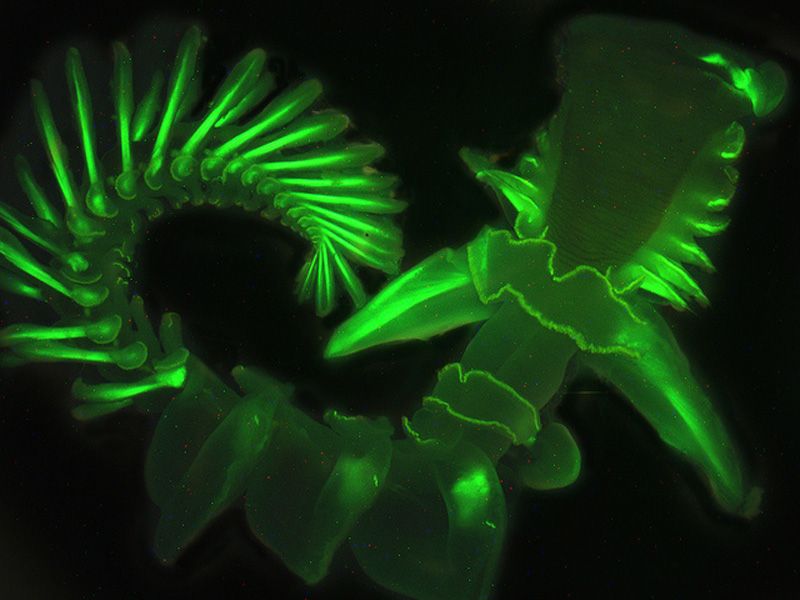
Ocean Glow Stick: Sea Worm Emits Strange Blue Glow

One common sea worm has a rather uncommon trick: Chaeteopterus variopedatus – also known as the parchment tube worm for the paperlike tubes it builds for itself and lives within throughout its life — secretes a bioluminescent mucus that makes it glow blue.
Now, scientists are a step closer to understanding the mechanisms behind the worm's glow.
The parchment tube worm can be found on shallow, sandy seafloors all around the world. Its glow sets it apart from other tube worms, most of whichdon't glow, and other shallow water organisms, which typically emit green light, not blue.
Green light is more typical of shallow-water bioluminescencebecause it travels farther than any other color on the light spectrum, a useful quality in the turbid near-shore environment. [Gallery: Glowing Aquatic Life]
"Shallow water is much more complex than deep water from a physical standpoint, and green is what organisms see best," Dimitri Deheyn, a biologist at the Scripps Institution of Oceanography involved in the research, told LiveScience's OurAmazingPlanet. "If you produce light and you want light to be associated with an ecological function, you want organisms to see it."
Researchers have known about the unusual blue-glowing worm for decades, but nobody has ever looked closely at its light-emitting properties. Now, Deheyn and his colleagues have conducted two new studies that help characterize it.
First, the team found that, unlike light-emitting mechanisms in many other organisms, the worm does not require oxygen.
Sign up for the Live Science daily newsletter now
Get the world’s most fascinating discoveries delivered straight to your inbox.
Light production usually occurs when two chemicals react together with oxygen to produce a compound that then produces light, Deheyn said. In past studies, researchers have found that glowing stops in the absence of oxygen.
But when Deheyn's team removed oxygen from the tube worm, the worm continued glowing. They reported these findings last month in the journal Physiological and Biochemical Zoology.
"In our case, if you remove oxygen, you don't stop the light," said Deheyn. "So the biochemical pathway that eventually leads to light production does not follow conventional characteristics."
In a separate experiment, the team found that riboflavin— also known as vitamin B2 — plays an important role in the worm's light production, but its exact role remains unclear. However, since the worms do not produce riboflavin on their own, they must be acquiring their glowing properties from their diet or from symbiosis with bacteria, the researchers recently reported in the journal Photochemistry and Photobiology.
The team still has not determined why the animals emit blue light or, even more broadly, why they produce light at all. They think it could be used to lure prey or to ward off predators, but this remains unclear, they say.
Still, these discoveries bring the researchers closer to understanding the array of different bioluminescent pathways in the animal world, of which researchers estimate there could be 20 to 30 varieties, only about three of which have been studied in detail, Deheyn said.
Follow Laura Poppick on Twitter. Follow OurAmazingPlanet @OAPlanet, Facebook and Google+. Original article at LiveScience's OurAmazingPlanet.










